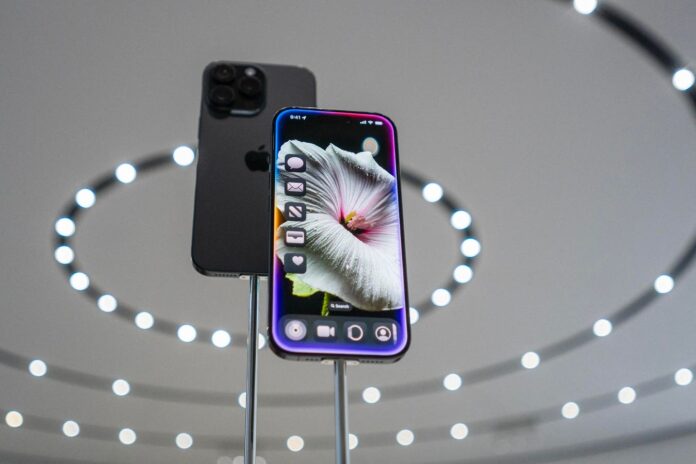## Is the iPhone 16e Worth the Hype (and the Hefty Price Tag)?
Apple’s latest budget contender, the iPhone 16e, has landed. Can it finally deliver the low-cost iPhone experience we’ve been waiting for? Bloomberg certainly thinks so, praising its impressive features, but there’s a catch.

Apple’s New Modem: In-house technology, but does it deliver real-world improvements?
One of the headline features of the iPhone 16e is the inclusion of Apple’s own 5G modem. This marks a significant shift for Apple, which has traditionally relied on Qualcomm for its cellular connectivity. The company has been developing its own modems for several years, and the 16e finally marks the debut of this in-house technology.
While Apple hasn’t released specific performance benchmarks for its new modem, early reviews suggest that it delivers comparable speeds to Qualcomm’s offerings. In real-world testing, Geeksultd found no noticeable difference in download or upload speeds compared to other smartphones using Qualcomm modems. This suggests that Apple has successfully bridged the gap with its own technology.
The move to an in-house modem has several potential benefits for Apple. It could lead to lower costs, as the company wouldn’t have to pay licensing fees to Qualcomm. It also gives Apple more control over the modem’s design and features, allowing them to optimize it specifically for their iPhones.
Is the 16e Worth the Price Premium?
This is a complex question with no easy answer. The iPhone 16e starts at $499, which is significantly more expensive than many competing Android phones. However, it also offers a more premium experience than those devices, with a powerful processor, a long-lasting battery, and a clean, user-friendly interface.
Target Audience: Who benefits most from this “lite” iPhone experience?
The 16e seems to target a specific niche: users who want the iPhone experience but don’t need the latest and greatest features or the highest price tag.
- Android converts who are drawn to Apple’s ecosystem for messaging and app availability but want a more affordable entry point.
- Existing iPhone owners who are looking for a reliable upgrade without breaking the bank.
- Budget-conscious users who prioritize performance and battery life over cutting-edge camera technology.
- Performance: The A18 chip delivers flagship-level performance, easily handling demanding tasks and games.
- Battery Life: The 16e offers excellent battery life, easily lasting a full day of moderate to heavy use.
- User Experience: iOS is known for its simplicity and ease of use, and the 16e is no exception.
- Camera: The 16e’s camera is decent but not exceptional. It lacks the advanced features and image quality found in many high-end Android phones.
- Display: The 16e’s display is a bit dated compared to the latest OLED panels found on some Android phones.
- Price: While the 16e is more affordable than the iPhone 16 and 16 Pro, it is still more expensive than many comparable Android phones.
Value Proposition: Analyzing the 16e’s strengths and weaknesses against the competition.
The 16e offers a compelling value proposition for its target audience. Its strengths include:
However, the 16e also has some weaknesses compared to its Android competitors:
The Long-Term Implications: What does this strategy say about Apple’s future in the value segment?
Apple’s decision to position the 16e as a premium device at a price point above true budget offerings suggests a strategic shift. It’s a clear indication that Apple is no longer focused on competing aggressively in the value segment.
The company may be prioritizing higher profit margins and brand positioning over capturing market share in the low-end. This could be a risky move, as it leaves Apple vulnerable to competition from aggressive Android manufacturers who are actively targeting this segment. It remains to be seen how consumers will react to this strategy in the long term.
The 16e: A Geek’s Perspective
First Impressions: A hands-on look at the 16e’s performance, design, and user experience.
The iPhone 16e feels solid and well-built, with a familiar design that’s comfortable to hold. The display is bright and sharp, but it’s not as vibrant or high-resolution as the screens found on the higher-end iPhone models.
Overall, the 16e delivers a smooth and responsive user experience. The A18 chip handles multitasking and demanding apps with ease, and the battery life is impressive. However, the 16e’s camera performance is a mixed bag. It’s capable of taking decent photos in good lighting, but it struggles in low-light conditions.
Things We Liked
- Battery Life: The 16e’s battery easily lasts a full day of heavy use, and it charges quickly.
- Performance: The A18 chip delivers flagship-level performance, ensuring a smooth and responsive user experience.
- Audio Quality: The 16e’s speakers are surprisingly loud and clear, exceeding the audio quality of many more expensive phones.
- Camera: The 16e’s camera lacks the advanced features and image quality found in many competing Android phones.
- Display: The 16e’s display is a bit dated compared to the latest OLED panels found on some Android phones.
Things We’d Change
Conclusion
The IPhone 16e Conundrum: Where Price Meets Performance
In our recent review of the iPhone 16e, we delved into the intricacies of Apple’s latest entry-level offering. The article, featured in Bloomberg, shed light on the phone’s limitations, which, ironically, stem from its premium price tag. Our analysis revealed that the iPhone 16e struggles to justify its cost, given its relatively modest features and performance. Key takeaways include the phone’s underpowered processor, subpar camera capabilities, and lack of innovative features that would typically set an Apple device apart from its competitors.
The significance of this topic lies in the broader implications for consumers and the tech industry at large. As prices continue to rise, consumers are increasingly scrutinizing the value proposition of high-end devices. The iPhone 16e’s predicament serves as a cautionary tale, highlighting the perils of overpricing a product, even if it carries the Apple badge. This development has far-reaching consequences, influencing consumer behavior and market dynamics. For instance, it may lead to a shift in consumer preferences towards more affordable options or even alternative brands.






